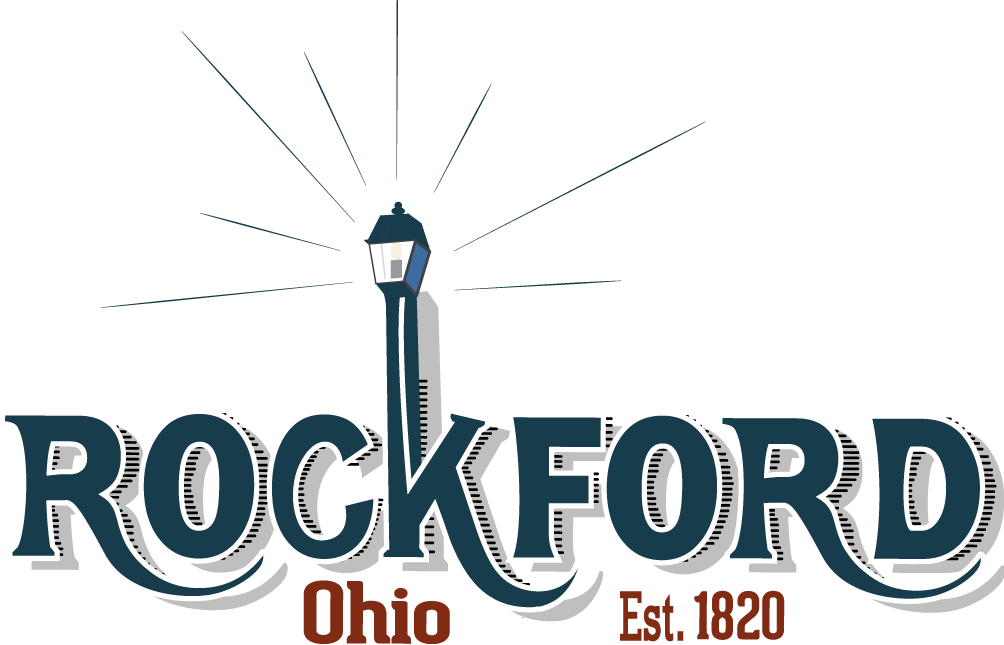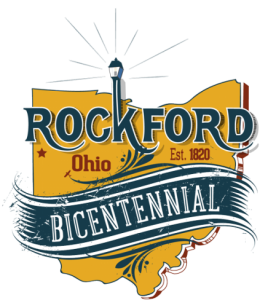Consumer Confidence Report 2014
Village of Rockford
Consumer ConfidenceReport
2014
Ohio Environmental ProtectionAgency Division of Drinking and GroundWaters
Updated March2015
Village of Rockford
Drinking Water Consumer ConfidenceReportFor 2014
The Village of Rockfordhas prepared the following report to provide information to you,theconsumer, on the quality of our drinking water. Included within this report is generalhealth information, water quality test results, how to participate in decisions concerning your drinkingwaterand water systemcontacts.
Source WaterInformation
The Village of Rockfordreceives its drinking water from two wells that were updated in 2010. These wells are located behind the outfield fence at the Parkway High School baseball diamond.
Ohio EPA completed a study of the Village’s source for drinking water to identify potential contaminant sources and provide guidance on protecting the drinking water source. According to the study the aquifer (water rich zone) that supplies water to the village has a low susceptibility to contamination. This determination is based upon the following:
- Presence of a thick protective layer of clay overlying the aquifer
- Significant depth (over 60 feet below ground surface) of the aquifer
- No evidence to suggest that ground water has been impacted by any significant levels of contaminants from human activities
- No apparent significant potential contaminants in the protection area
What are sources of contamination to drinking water?
The sources of drinking water (both tap water and bottled water) include rivers, lakes, streams,ponds,reservoirs, springs, and wells. As water travels over the surface of the land or through the ground,it dissolves naturally-occurring minerals and, in some cases, radioactive material, and can pickupsubstances resulting from the presence of animals or from humanactivity.
Contaminants that may be present in source water include: (A) Microbial contaminants, such asviruses and bacteria, which may come from sewage treatment plants, septic systems, agriculturallivestockoperations and wildlife; (B) Inorganic contaminants, such as salts and metals, which can benaturally- occurring or result from urban storm water runoff, industrial or domestic wastewater discharges, oiland
gas production, mining, or farming; (C) Pesticides and herbicides, which may come from a varietyof sources such as agriculture, urban storm water runoff, and residential uses; (D) Organicchemical contaminants, including synthetic and volatile organic chemicals, which are by-products ofindustrial processes and petroleum production, and can also come from gas stations, urban Strom waterrunoff,and septic systems; (E) Radioactive contaminants, which can be naturally-occurring or be the result ofoil and gas production and miningactivities.
In order to ensure that tap water is safe to drink, USEPA prescribes regulations which limit the amountof certain contaminants in water provided by public water systems. FDA regulations establish limitsforcontaminants in bottled water which must provide the same protection for publichealth.
Drinking water, including bottled water, may reasonably be expected to contain at least smallamounts of some contaminants. The presence of contaminants does not necessarily indicate that water posesa health risk. More information about contaminants and potential health effects can be obtainedbycalling the Federal Environmental Protection Agency’s Safe Drinking Water Hotline(1-800-426-4791).
Who needs to take special precautions?
Some people may be more vulnerable to contaminants in drinking water than the generalpopulation.Immuno-compromised persons, such as persons with cancer undergoing chemotherapy, personswhohave undergone organ transplants, people with HIV/AIDS or other immune system disorders,someelderly, and infants can be particularly at risk from infection. These people should seek adviceaboutdrinking water from their health care providers. EPA/CDC guidelines on appropriate means to lessentherisk of infection by Cryptosporidium and other microbial contaminants are available from theSafeDrinking Water Hotline(1-800-426-4791).
About your drinkingwater.
The EPA requires regular sampling to ensure drinking water safety. The Village of Rockford conductedsamplingforbacteria;inorganic;syntheticorganic;during 2014.Samples were collected for a total of eighteen different contaminants most of which were not detected in the Village of Rockfordwater supply. The Ohio EPA requires us to monitor for some contaminants less than once peryearbecause the concentrations of these contaminants do not change frequently. Some of our data,though accurate, are more than one yearold.
Monitoring & Reporting Violations & EnforcementActions
During the 2014 Annual monitoring period The Village of Rockford failed to sample for the second required monitoring of Total Trihalomethanes (TTHM), Haloacetic Acids, Five (HAA5) as required by the OEPA. The Village returned to compliance with sampling the month following the violation. The results showed levels below the OEPA action levels.
Steps have been taken to ensure all sampling will be conducted as required by enacting a more comprehensive management plan. This plan assigns responsibilities for sampling and contains contingency measures if the assigned Water Department personnel are absent.
Table of Detected Contaminants
Listed below is information on those contaminants that were found in the Village of Rockford
drinkingwater.
TABLE OF DETECTEDCONTAMINANTS
| Contaminants(Units) | MCLG | MCL | LevelFound | Rangeof Detections | Violation | Sample Year | Typical Sourceof Contaminants |
| Bacteriological | |||||||
| Coliform bacteria | 1 | 0 | 2 | n/a | yes | 2014 | Naturally present in the environment |
| InorganicContaminants | |||||||
| Arsenic (ppb) | 0 | 10 | 3.83 | BDL-3.83 | no | 2010 | Erosion of natural deposits runoff from orchards runoff from glass and electronics production wastes |
| Nitrate (ppm) | 10 | 10 | 0.587 | 0.587 | no | 2011 | Runoff from fertilizer use leaching from septic tanks sewage erosion of natural deposits |
| Lead (ppm) | 0 | AL=15 | 18.2 | n/a | yes | 2014 | Corrosion of household plumbing |
| Copper | 1.3 | AL=1.3 | .114 | n/a | no | 2014 | Corrosion of household plumbing |
| ResidualDisinfectants | |||||||
| Total Chlorine | 4 | 4 | 0.5 | 0.2-2.2 | no | 2014 | Water additive to control microbes |
Arsenic EducationalInformation
While your drinking water meets EPA’s standard for arsenic, it does contain low levels of arsenic.EPA’s standard balances the current understanding of arsenic’s possible health effects against the costof removing arsenic from drinking water. EPA continues to research the health effects of low levelsof arsenic, which is a mineral known to cause cancer in humans at high concentrations and is linkedto other health effects such as skin damage and circulatoryproblems.
Lead Educational Information
If present, elevated levels of lead can cause serious health problems, especially for pregnant womenand young children. Lead in drinking water is primarily from materials and components associatedwith service lines and home plumbing. Village of Rockfordis responsible for providing highqualitydrinking water, but cannot control the variety of materials used in plumbing components. Whenyourwater has been sitting for several hours, you can minimize the potential for lead exposure byflushingyour tap for 30 seconds to 2 minutes before using water for drinking or cooking. If you areconcerned about lead in your water, you may wish to have your water tested. Information on lead indrinkingwater, testing methods, and steps you can take to minimize exposure is available from the SafeDrinkingWater Hotline at 800-426-4791or athttp://www.epa.gov/safewater/lead.
Infants and young children are typically more vulnerable to lead in drinking water than thegeneral population. It is possible that lead levels at your home may be higher than at other homes inthecommunity as a result of materials used in your home’s plumbing. If you are concerned aboutelevated lead levels in your home’s water, you may wish to have your water tested and flush your tap for30seconds to 2 minutes before using tap water. Additional information is available from the SafeDrinkingWater Hotline(1-800-426-4791).
On July 29, 2014, we were informed that one of our routine bacteria samples, collected on July 8, 2014,was totalcoliformpositive.AsrequiredbytheGroundWaterRule,wecollected five samplesfromwells and distribution systemforfecalcontaminationanalysis.The distributionsamplewaspositiveforfecalcontamination{E.coli}. Inadequately treated or inadequately protected water may contain disease-causing organisms.Theseorganisms can cause symptoms such as diarrhea, nausea, cramps and associated headaches.Fecalindicators are microbes whose presence indicates that the water may be contaminated with humanor animalwastes.Microbesintheseposeaspecialhealthriskforinfants,youngchildren,someofthe elderly, and people with severely compromised immune system. In response, we sent notices to allof our customers within 24 hrs of learning of this positive sample. The situation seems to be a sampling error and has been resolved.
Public ParticipationInformation
How do I participate in decisions concerning my drinkingwater?
Public participation and comment are encouraged at regular meetings of village Councilwhichmeets the first and third Tuesday of each month at the Village Hall 7:30 pm
For more information on your drinking water contact Jeff Long @ 419/363-3032
Definitions of some terms contained within thisreport.
Maximum Contaminant Level Goal (MCLG): The level of a contaminant in drinking water belowwhich there is no known or expected risk to health. MCLGs allow for a margin ofsafety.
Maximum Contaminant level (MCL): The highest level of contaminant that is allowed in drinkingwater. MCLs are set as close to the MCLGs as feasible using the best available treatmenttechnology.
Parts per Million (ppm) or Milligrams per Liter (mg/L) are units of measure for concentration ofa contaminant. A part per million corresponds to one second in a little over 11.5days.
Parts per Billion (ppb) or Micrograms per Liter (μg/L) are units of measure for concentration ofa
- A part per billion corresponds to one second in 31.7years.
Maximum Residual Disinfectant Level Goal (MRDLG): The level of drinking water disinfectantbelowwhich there is no known or expected risk to health. MRDLGs do not reflect the benefits of the useof disinfectants to control microbialcontaminants.
Maximum Residual Disinfectant Level (MRDL): The highest level of a disinfectant allowed indrinkingwater. There is convincing evidence that addition of a disinfectant is necessary for control ofmicrobial contaminants.
Action Level (AL): The concentration of a contaminant which, if exceeded, triggers treatment orotherrequirements which a water system mustfollow.

